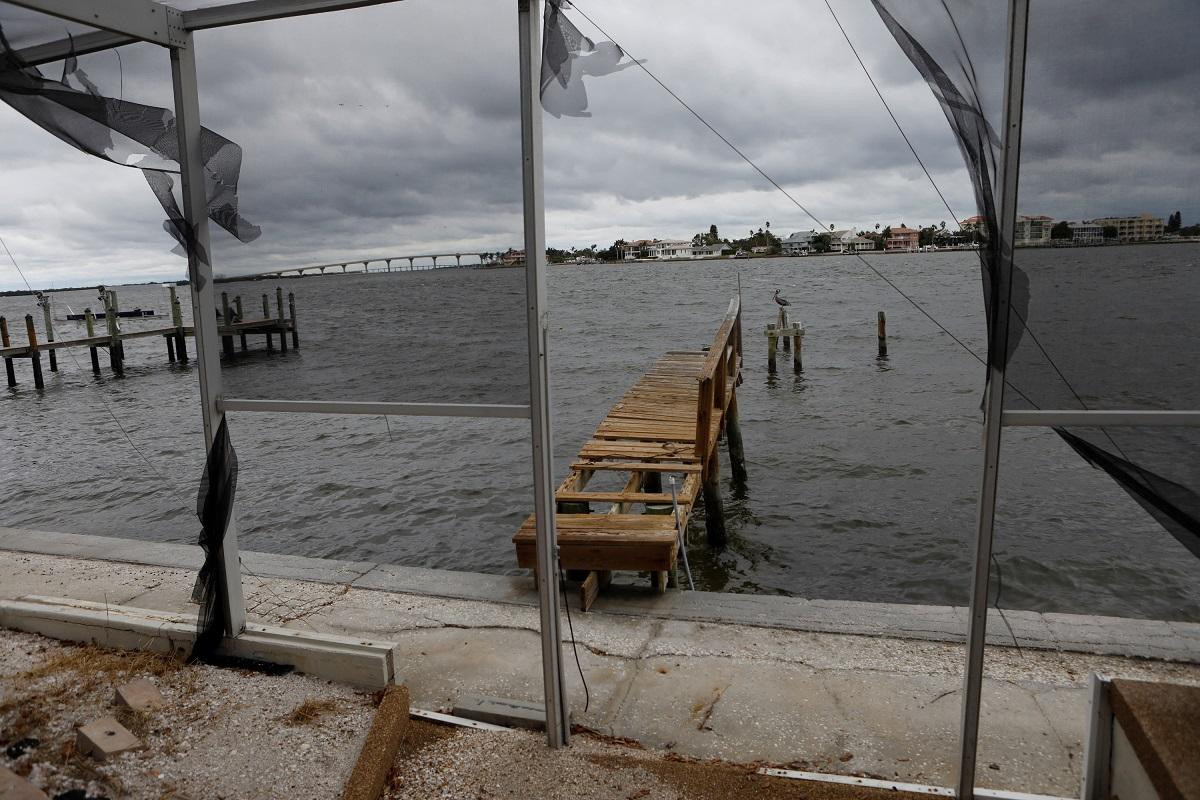Monster Hurricane Milton takes aim at Florida’s battered Gulf Coast

Hurricane Milton was expected to enlarge even as its intensity ebbed on Tuesday as the now-Category 4 storm ground past Mexico's Yucatan Peninsula en route to Florida's Gulf Coast, where more than 1 million people were ordered to evacuate before the monster storm arrived.
The densely populated west coast of Florida, still reeling from the devastating Hurricane Helene less than two weeks ago, braced for landfall on Wednesday.
The US National Hurricane Center said the storm was likely to hit near the Tampa Bay metropolitan area, where some of the 3 million residents rushed to dispose of mounds of debris left behind by Helene before heeding the evacuation orders. If the hurricane drives directly across the city, it will mark the first time since 1921 that this has occurred.
Florida Governor Ron DeSantis said on Tuesday that the state would activate 8,000 National Guard members and is staging truck loads of supplies and equipment near the area where the storm is expected to make landfall.
"Now is the time to execute your plan ... but that time is running out," he said during a news briefing, urging residents to heed warnings from forecasters and local evacuation orders.
With maximum sustained winds of 155 mph (250 kph), Milton was downgraded from a category 5 to a category 4 hurricane on the five-step Saffir-Simpson scale, according to the US National Hurricane Center's latest advisory on Tuesday.
Catastrophic damage expected
While fluctuations in intensity are expected, Milton is forecast to remain an extremely dangerous hurricane through landfall in Florida, according to the hurricane center. That means catastrophic damage will occur, including power outages expected to last days.
The hurricane center forecast storm surges of 10 to 15 feet (3 to 4.5 meters) along a stretch of coastline north and south of Tampa Bay.
Fed by warm waters in the Gulf of Mexico, Milton became the third-fastest intensifying storm on record in the Atlantic Ocean, as it surged from a tropical storm to a Category 5 hurricane—the most powerful category—in less than 24 hours.
Its path from west to east was also highly unusual, as Gulf hurricanes typically form in the Caribbean Sea and make landfall after traveling west and turning north.
"It is exceedingly rare for a hurricane to form in the western Gulf, track eastward, and make landfall on the western coast of Florida," said Jonathan Lin, an atmospheric scientist at Cornell University. "This has big implications since the track of the storm plays a role in determining where the storm surge will be the largest."
Milton is expected to grow in size before making landfall on Wednesday, putting hundreds of miles of coastline within the storm surge danger zone, said Jamie Rhome, deputy director of the National Hurricane Center. The area placed under hurricane warning is home to more than 9.3 million residents.
Milton was likely to remain a hurricane for its entire journey across the Florida peninsula, Rhome told a Monday news briefing.
As of 10 a.m. CDT on Tuesday, the eye of the storm was 65 miles (105 km) north-northeast of Progreso, a Mexican port near the Yucatan state capital of Merida, and 585 miles (840 km) southwest of Tampa, moving east at 9 mph (15 kph).
Milton was expected to pound the northern edge of the Yucatan Peninsula in the early hours of Tuesday. The area is home to the picturesque colonial-era city of Merida, population 1.2 million, Maya ruins popular with tourists and the port of Progreso.
In Florida, counties along the western coast ordered people in low-lying areas to take shelter on higher ground.
Pinellas County, which includes St. Petersburg, said it ordered the evacuation of more than 500,000 people. Lee County said 416,000 people lived in its mandatory evacuation zones. At least six other coastal counties ordered evacuations including Hillsborough County, which includes the city of Tampa.
With one final day for people to evacuate on Tuesday, local officials raised concerns of traffic jams and long lines at gas stations.
Relief efforts remain ongoing throughout much of the US Southeast in the wake of Helene, a Category 4 hurricane that made landfall in Florida on Sept. 26, killed more than 200 people and caused billions of dollars in damage across six states. Asheville and other mountain communities of western North Carolina, hundreds of miles inland, were particularly hard hit. — Reuters




